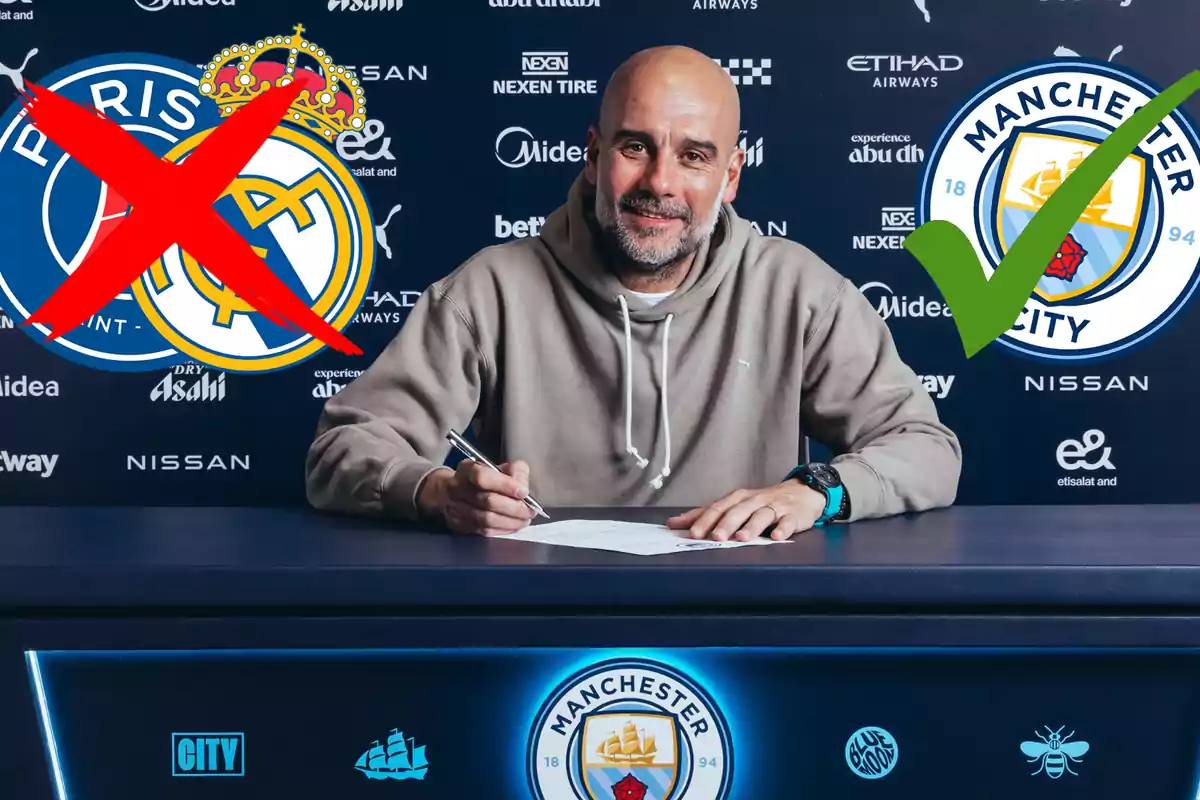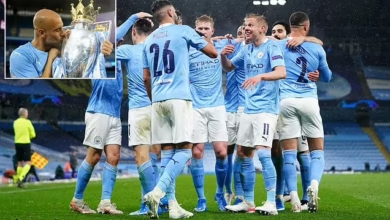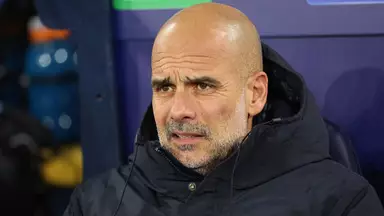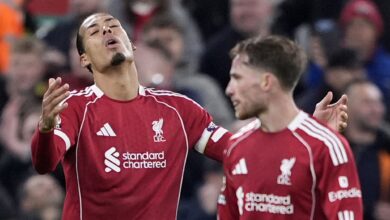Not PSG, not Real Madrid: Guardiola spends a crazy amount of money for the Club World Cup

In the world of modern football, where astronomical transfer fees have become the norm rather than the exception, Manchester City has once again raised the bar with their latest spending spree. Following a season that fell short of their lofty expectations, Pep Guardiola’s side has opened their coffers in spectacular fashion, committing to expenditures that dwarf even the lavish budgets of traditional powerhouses like Paris Saint-Germain and Real Madrid.
The Citizens’ approach to the upcoming Club World Cup represents more than just squad reinforcement – it’s a statement of intent that reverberates throughout the footballing world. With approximately €350 million spent across two transfer windows, Manchester City has demonstrated their unwavering commitment to returning to the pinnacle of world football.
Guardiola’s Vision: Building for the Future
Pep Guardiola, the mastermind behind Manchester City’s golden era, has been characteristically direct about the club’s transfer ambitions. Following the conclusion of a disappointing campaign by City’s standards, the Catalan coach addressed the media with his typical blend of honesty and strategic thinking.
“There’s no doubt new players will arrive, especially in areas that need reinforcements,” Guardiola stated emphatically. This declaration wasn’t merely coach-speak designed to appease supporters; it was a clear indication that substantial changes were on the horizon.
The club’s hierarchy has echoed Guardiola’s sentiments, with the president confirming the ambitious nature of their transfer strategy. “In January, four new signings already arrived, which gives an idea of what’s expected this summer. We’ll keep working with a clear goal: to have a renewed squad ready for the Club World Cup,” he explained in an interview with the club’s official media channels.
This coordinated message from both the technical and administrative sides of the club underscores the unified vision driving Manchester City’s transfer policy. It’s a reminder that successful clubs operate with clear communication and shared objectives between all stakeholders.
The Summer Reinforcements: Quality and Quantity
The summer transfer window has seen Manchester City make four significant additions to their squad, each carefully selected to address specific needs identified during their comprehensive season review. The quartet of signings – Tijjani Reijnders, Rayan Aït-Nouri, Rayan Cherki, and goalkeeper Bettinelli – represents a combined investment of approximately €150 million.
Tijjani Reijnders: The Midfield Maestro
Perhaps the most significant of the summer acquisitions is Tijjani Reijnders, the 26-year-old Dutch midfielder who has made such an impression at AC Milan. Manchester City’s successful pursuit of Reijnders culminated in a deal worth €55 million guaranteed, with an additional €15 million in performance-related variables.
Reijnders’ statistics at Milan paint the picture of a player at the peak of his powers. His involvement in approximately 20 goals throughout the season – a remarkable tally for a midfielder – demonstrates his ability to influence games in the final third while maintaining his defensive responsibilities. This dual-threat capability makes him an ideal fit for Guardiola’s tactical system, which demands technical excellence and tactical intelligence from every player.
The Dutch international’s journey to Manchester represents more than just a career move; it’s a testament to his development as one of Europe’s premier midfield talents. His ability to dictate tempo, create chances, and contribute goals makes him a perfect addition to City’s already formidable midfield arsenal.
Interestingly, Reijnders had been linked with a potential move to Real Madrid, but the Spanish giants ultimately decided against pursuing the transfer. This decision has proven to be Manchester City’s gain, as they moved quickly to secure his signature without hesitation. The midfielder’s debut at the Club World Cup will be eagerly anticipated by City supporters, who will be hoping he can replicate his Milan form in the famous sky blue jersey.
Rayan Aït-Nouri: The Attacking Fullback
At 24 years old, Rayan Aït-Nouri represents the modern fullback – a player equally comfortable defending his own penalty area and contributing to attacks in the opposition’s half. The Algerian international’s addition addresses Manchester City’s need for depth and quality in the fullback positions, areas that have occasionally been exposed during high-intensity periods of the season.
Aït-Nouri’s pace and technical ability make him an ideal fit for Guardiola’s tactical approach, which often sees fullbacks pushing high up the pitch to create numerical superiority in attacking phases. His crossing ability and positional awareness will provide City with additional options in their quest to break down stubborn defensive setups.
Rayan Cherki: The Creative Spark
The youngest of the summer signings, 21-year-old Rayan Cherki brings a different dimension to Manchester City’s attacking options. The French playmaker’s creativity and flair offer Guardiola additional tactical flexibility, particularly in games where City need to unlock well-organized defenses.
Cherki’s youth and potential make him an investment in Manchester City’s future as much as their present. His development under Guardiola’s tutelage could see him emerge as one of European football’s premier attacking midfielders, adding to City’s already impressive collection of young talent.
Bettinelli: The Goalkeeping Option
The surprise addition of goalkeeper Bettinelli provides Manchester City with additional depth between the posts. While perhaps not as high-profile as the other signings, his experience and professionalism make him a valuable squad player who can be relied upon when called into action.
The Winter Spending Spree: Setting the Foundation
Manchester City’s summer expenditure represents only half of their recent transfer activity. The January window saw the club invest approximately €200 million in four significant signings: Omar Marmoush, Abdukodir Khusanov, Nico González, and Vitor Reis.
This winter spending spree was conducted with the specific intention of strengthening the squad for the crucial Champions League encounters that lay ahead. However, despite these reinforcements, Manchester City’s Champions League campaign ended in disappointment against Real Madrid, with Kylian Mbappé’s second-leg hat-trick at the Bernabéu proving decisive.
The failure to progress in Europe’s premier competition despite significant investment serves as a reminder of football’s unpredictable nature. It also reinforces why Manchester City have continued their aggressive transfer policy into the summer, determined to build a squad capable of competing on multiple fronts.
Strategic Decisions and Missed Opportunities
Manchester City’s transfer strategy has involved making difficult decisions about which players to pursue and which to abandon. One notable example is their decision to rule out a move for Florian Wirtz, despite the German midfielder’s obvious talent and potential.
The economic reasoning behind this decision becomes clear when considering that Wirtz’s transfer fee would have approximated the combined cost of the three major summer signings. This calculation demonstrates the sophisticated financial planning behind City’s transfer strategy, where every decision is evaluated against multiple alternatives.
Wirtz’s subsequent move to Liverpool, after also attracting interest from Real Madrid, illustrates the competitive nature of the modern transfer market. Top players have multiple options, and clubs must balance ambition with financial prudence when making their selections.
Learning from Past Mistakes
Manchester City’s president has been refreshingly honest about the club’s transfer strategy and its past shortcomings. His admission that “when I look at last summer, I think we should’ve been more aggressive in some of the changes we needed to make. We didn’t do it and it ended up costing us the season” provides insight into the club’s self-reflection process.
This acknowledgment of previous mistakes has clearly influenced the club’s current aggressive approach to the transfer market. Rather than repeating the cautious strategy that may have contributed to their disappointing season, City have embraced a philosophy of decisive action and significant investment.
The lesson learned appears to be that in modern football’s hyper-competitive environment, hesitation can be costly. By moving quickly and decisively for their targets, Manchester City aims to avoid the regret that can come from missed opportunities.
The Club World Cup Factor
The expanded Club World Cup represents a new challenge for European clubs, and Manchester City’s preparation for this tournament has clearly influenced their transfer strategy. The competition’s format and prestige make it an attractive target for clubs seeking to establish their global credentials.
Guardiola’s squad planning has been specifically tailored to ensure City can compete effectively in the United States. The combination of experienced international players and promising young talents provides the depth necessary to succeed in a tournament that will test squad resources.
The timing of the Club World Cup also means that Manchester City’s new signings will have limited time to integrate into the team’s tactical system. This reality has likely influenced the club’s preference for players who can adapt quickly to Guardiola’s demands and contribute immediately.
Financial Fair Play and Sustainability
Manchester City’s massive spending naturally raises questions about Financial Fair Play regulations and long-term sustainability. The club’s ability to invest €350 million across two transfer windows demonstrates their strong financial position, built on commercial success and strategic partnerships.
However, the regulatory environment continues to evolve, with authorities keen to ensure competitive balance across European football. Manchester City’s compliance with these regulations while maintaining their competitive edge represents an ongoing challenge that requires careful financial management.
The club’s approach suggests confidence in their ability to balance sporting ambition with regulatory compliance, using their commercial strength to support their on-field objectives.
The Ripple Effect on the Transfer Market
Manchester City’s aggressive spending has implications beyond their own squad building. Their willingness to pay premium prices for target players inevitably influences market values and creates upward pressure on transfer fees throughout the football ecosystem.
This effect is particularly pronounced when City compete with other elite clubs for the same players. Their successful pursuit of Reijnders, despite Real Madrid’s interest, demonstrates how financial power can be decisive in securing priority targets.
The broader implications for football’s competitive balance remain a subject of ongoing debate, with some arguing that such spending levels create an unsustainable arms race among elite clubs.
Tactical Integration and Team Dynamics
Guardiola’s greatest challenge will be integrating these new signings into his established tactical framework while maintaining the team chemistry that has been crucial to Manchester City’s success. The arrival of four new players represents a significant change to the squad dynamic, requiring careful management to ensure positive outcomes.
The Spanish coach’s track record suggests he is well-equipped to handle this challenge. His ability to adapt his tactical approach to accommodate new players while maintaining his core principles has been demonstrated repeatedly throughout his career.
The pre-season period will be crucial for establishing the relationships and understanding necessary for the new signings to contribute effectively from the start of the campaign.
Looking Ahead: Expectations and Pressure
Manchester City’s substantial investment naturally creates heightened expectations for the upcoming season. Supporters, media, and stakeholders will all be watching closely to see whether the club’s financial outlay translates into improved performances and trophy success.
The pressure on Guardiola and his players will be immense, particularly given the disappointment of the previous season. The Club World Cup represents an early opportunity to demonstrate the value of the club’s transfer strategy and justify the significant investment made.
Success in the tournament would provide validation for the club’s approach and momentum for the domestic season. Failure, however, would intensify scrutiny and raise questions about the effectiveness of their transfer strategy.
Conclusion: A Calculated Gamble
Manchester City’s record-breaking spending spree represents a calculated gamble on returning to the pinnacle of world football. The club’s willingness to invest €350 million across two transfer windows demonstrates their absolute commitment to success and their confidence in their ability to compete with any club in the world.
The integration of eight new players across two transfer windows presents both opportunities and challenges. While the quality of the signings is undeniable, their collective impact will depend on Guardiola’s ability to blend them seamlessly into his tactical system.
The Club World Cup will provide the first major test of Manchester City’s rebuilt squad. Success in the tournament would justify the enormous investment and establish City as the dominant force in world football that their spending suggests they aspire to be. The stakes could not be higher, and the footballing world will be watching with intense interest to see whether money can indeed buy success at the highest level of the beautiful game.














